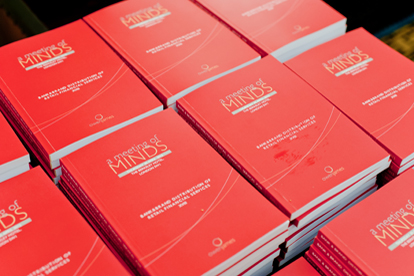

Expert: Carolina Minio-Paluello at Lombard Investment Managers
Moderator: Lance Peltz
Key message
With equities and bonds looking expensive and facing a fundamental deterioration, wealth managers can no longer assume that the 60:40 model will continue indefinitely.
The traditional approach has been to allocate 60% of portfolios to fixed income and 40% growth-seeking investments/equities. Preservation of capital, yield and liquidity were the objectives and security the underlying principle of fixed income. Growth was focused on capturing attractive risk premium on a medium to longer-term risk horizon.
In a session led by Lombard Investment Managers, delegates discussed the future of asset allocation following a fundamental shift in the investment environment.
Headlines
- Fixed income has gone through a difficult period; in the search for lower volatility everything looks overpriced.
- The conventional approach of 60% allocation to fixed income was based on considerations of yield, safety and liquidity. Actually, none of those criteria are met any more.
- There is no magic solution. To adapt their strategy, Wealth Managers will need to go back to basics and find alternatives that meet the same objectives as conventional asset allocation.
Key themes
There is a new paradigm in fixed income markets
Negative interest rates are changing the structure of fixed income markets. The conventional wisdom around the 60:40 portfolio was derived from client perceptions of yield, safety and liquidity. The fundamentals across all three have changed, posing significant challenges for investors.
Firstly, yields are low or negative, forcing investors to search elsewhere. We are seeing flatter yield curves across several economies, including Switzerland, Sweden, Japan, Germany, the UK and the US.
Secondly, there is increased market risk. Many investors extended duration and are now highly sensitive to moves in interest rates. The diversifying benefits of fixed income are also reduced. With many investors holding the same position, there has been an increase in herding.
Thirdly, liquidity is fractured. Tightening regulation (e.g. Basel III), despite its good intentions, has increased the cost of banks’ balance sheets; Central Banks have bought up 30% of outstanding debt in major sovereign bond markets. Banks are less able to hold and trade fixed income.
The structural changes in the investment world make it unfeasible for the 60:40 model to continue unchanged. Equity valuations are at an all-time high, while traditional risk premia remain subdued. Investors are being forced to reconsider their approach.
Implications for fixed income portfolio management
For investors and wealth managers, there are several significant implications of this shift in paradigm.
Firstly, safety should be the new credo. It must be acknowledged that liquidity in fixed income is impaired and that portfolios need to be built that limit the need to access liquidity. Portfolios need to be safer and focussed on minimising the risk of credit default. Investors also need to move away from traditional benchmarks as a starting-point: they are less structurally safe and rely on active trading to mitigate the risk.
In this topsy-turvy world, investors will need to focus on seeking the outcomes that fixed income was able to achieve in the past. No one investment will offer all the advantages that fixed income did, but experts argued for a fixed income portfolio that is split between an allocation that seeks yield and capital preservation from a broader universe, and one that invests in liquid strategies. In combination, these allocations could act as a substitute for traditional fixed income.
Finally, the growth-seeking part of the traditional portfolio will need to be re-thought. With attractive risk premia opportunities more scarce, a different approach is needed, likely to be focussed on a longer-term time horizon, more alpha (high conviction) equity strategies and split between a liquid and non-liquid allocation.
The new fixed income allocation
The new environment requires a four-pronged approach to fixed income allocation:
- Capital preservation strategy: a replacement for bonds, this would be a diversified, risk-based, multi-asset portfolio capturing both traditional and alternative risk premia.
- Income-seeking strategy: low turnover allocation, where the objective is to buy and maintain. Likely to take the form of credit (e.g. global investment grade, global BBB-BB, global high yield) and convertible high yield.
- Growth-seeking strategy: alternative risk premia (e.g. emerging markets equity and local currency bonds, global equities) as well as uncorrelated investments (e.g. alternative strategies, insurance-linked securities).
- Structural illiquid strategy: longer-term commitments, such as private equity, real estate and private debt.
The discussion that followed centred on the need to manage client expectations around both the risks and the expected returns that this shift in strategy will present.
Conclusions
Reports of the death of the 60:40 portfolio are unlikely to be exaggerated. The round-table showed that conventional thinking on asset allocation has to change soon. Wealth managers and investors alike will need to return to the fundamental objectives underpinning the 60:40 model in order to identify appropriate substitutes.


